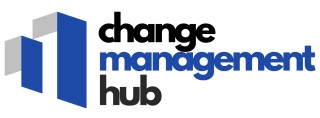Understanding the ADKAR Model
Getting to Know ADKAR
The ADKAR model is a cornerstone in the field of change management. Developed by Prosci, it offers a straightforward approach to managing organizational change. The acronym ADKAR stands for Awareness, Desire, Knowledge, Ability, and Reinforcement. These five building blocks are designed to guide both individuals and organizations through the change process.
Breaking Down the Steps
Let's break it down a bit. First, Awareness is about understanding why a change is needed. Without this, employees might not see the value in the change. Next, Desire involves fostering a willingness to participate and support the change. This is where leadership plays a crucial role, as they can inspire and motivate their teams.
Then comes Knowledge. This step ensures that people have the information and training needed to implement the change. It's not just about knowing what to do, but understanding how to do it effectively. Following this, Ability focuses on translating knowledge into action. Employees need the skills and tools to execute the change.
Finally, Reinforcement is about making sure the change sticks. It involves strategies to sustain the change and prevent a return to old habits. This might include feedback loops, rewards, and continuous support.
Why ADKAR Works
ADKAR is particularly effective because it addresses change at the individual level. Organizations are made up of people, and successful change management requires addressing the human side of change. By focusing on individuals, the ADKAR model helps ensure that change initiatives are not only implemented but also embraced by the workforce.
ADKAR in Action
Imagine a company rolling out a new technology platform. Using the ADKAR model, the organization would start by creating awareness about the benefits of the new system. They would then work on building desire by involving employees in the process, perhaps through workshops or feedback sessions. Knowledge and ability would be developed through training programs. Finally, reinforcement might include recognizing employees who effectively use the new platform, ensuring the change becomes part of the organizational culture.
For more insights on applying change models to your organization, you might want to read about the Knoster Model in Change Management.
Comparing ADKAR with Other Models
Exploring the Differences Between Change Management Models
When it comes to change management, a variety of models offer different approaches to guiding organizations through transitions. Let's take a closer look at how the ADKAR model stacks up against some other popular frameworks.
ADKAR vs. Kotter's 8-Step Process
The ADKAR model, developed by Prosci, focuses on individual change and is structured around five key elements: Awareness, Desire, Knowledge, Ability, and Reinforcement. This model emphasizes the personal journey of employees, making it highly effective in addressing resistance and ensuring that people are on board with the change.
In contrast, Kotter's 8-Step Process is more organizationally focused. It starts with creating a sense of urgency and follows through with steps like forming a powerful coalition and generating short-term wins. Kotter's model is more about the collective movement of the organization towards change, which can be particularly useful for large-scale transformations.
Comparing with Lewin's Change Management Model
Lewin's model is another classic, known for its simplicity and effectiveness. It breaks down change into three stages: Unfreeze, Change, and Refreeze. This model is great for organizations looking to make a clear break from the past and establish new processes.
While ADKAR focuses on the individual, Lewin's model is more about preparing the organization as a whole. It’s a straightforward approach that helps in stabilizing the new changes, making it easier for companies to maintain the new status quo.
Understanding the Kubler-Ross Change Curve
The Kubler-Ross Change Curve, originally developed to describe the stages of grief, has been adapted for change management. It highlights the emotional journey that employees go through during change, from denial to acceptance. This model is particularly useful for understanding and managing the emotional responses of employees during transitions.
ADKAR complements this model by offering a structured approach to help employees move through these emotional stages effectively, ensuring that they have the support and resources needed to embrace change.
Bridges Transition Model and Nudge Theory
Bridges Transition Model focuses on the psychological transition rather than the change itself. It emphasizes letting go of the old, navigating the neutral zone, and embracing the new. This model is beneficial for organizations that need to manage the human side of change carefully.
Nudge Theory, on the other hand, is about subtly guiding people towards desired behaviors without direct enforcement. It's a behavioral economics approach that can be used alongside ADKAR to encourage employees to adopt new practices willingly.
Each change management model has its strengths and is suited to different types of organizational changes. By understanding these differences, companies can choose the right approach to help their employees and organization adapt successfully. For more insights on effective models for managing change, explore effective models for managing change.
The Role of Leadership in Change Management
The Heartbeat of Change: Leadership's Influence
When it comes to steering the ship of change, leadership is the captain that keeps everything on course. It's not just about making decisions; it's about inspiring and guiding people through the sometimes choppy waters of organizational change. Whether you're working with the ADKAR model, Kotter's steps, or Lewin's change management approach, the role of leadership is central to success.
Leaders are the ones who can articulate a clear vision, set expectations, and communicate effectively. They are the bridge between the change model and the employees, translating complex strategies into understandable actions. This is crucial in helping people grasp the ADKAR model or any other framework you're using.
Leading by Example
Leadership isn't just about words; it's about actions. Employees look up to leaders who walk the talk. If a leader embraces the change, it's more likely that the employees will too. This is particularly important when dealing with resistance to change, which can be a major hurdle in any change initiative.
Consider a company implementing the Prosci ADKAR model. A leader who demonstrates commitment to the change process by actively participating in training sessions and using new tools sets a powerful example. This can help reduce resistance and foster a culture of acceptance.
Communication: The Glue That Holds It All Together
Effective communication is a leader's best tool. It's about more than just sending out memos or holding meetings. It's about listening, understanding concerns, and providing feedback. Leaders who excel in communication can help demystify the change process, making it less intimidating for employees.
For example, during a transition using the Bridges Transition Model, leaders can use regular updates to keep everyone informed and engaged. By doing so, they help employees move from the old status quo to the new normal with less anxiety.
Empathy and Support
Change can be unsettling, and leaders need to show empathy. Understanding the emotional impact of change on employees is vital. The Kubler Ross change curve highlights the emotional stages people go through during change, and leaders who acknowledge these emotions can provide better support.
In one organization, leaders used the Nudge Theory to introduce small changes gradually, allowing employees to adjust at their own pace. This approach, coupled with empathetic leadership, helped ease the transition and maintain morale.
Leadership isn't just about steering the ship; it's about being there for the crew. By understanding the emotional and practical needs of employees, leaders can guide their organizations through successful change initiatives. For more on crafting an effective strategy for change management, check out this helpful resource.
Overcoming Resistance to Change
Breaking Through the Barriers
Resistance to change is as old as change itself. Whether it's a new process, a shift in company culture, or a complete overhaul of operations, employees often cling to the status quo. But why? The reasons can be as varied as the people themselves, ranging from fear of the unknown to a lack of trust in the management.
One of the most recognized frameworks to tackle this resistance is the ADKAR model. It emphasizes the importance of awareness, desire, knowledge, ability, and reinforcement. Each step in this model addresses a potential barrier to change, helping organizations guide their employees through the transition smoothly.
Understanding Resistance
Before diving into solutions, it's crucial to understand the root causes of resistance. Employees may resist change due to:
- Fear of the Unknown: Change often brings uncertainty, and uncertainty can be unsettling.
- Loss of Control: Changes can make employees feel like they're losing control over their work environment.
- Bad Timing: Introducing changes during busy or stressful periods can exacerbate resistance.
- Past Experiences: Previous failed changes can lead to skepticism.
Strategies to Overcome Resistance
To effectively manage resistance, organizations can employ several strategies:
- Communication: Clear and transparent communication about the change process can alleviate fears and build trust.
- Involvement: Involving employees in the planning and implementation stages can increase buy-in and reduce resistance.
- Support Systems: Providing training and resources can help employees feel more confident in their ability to adapt.
- Leadership: Strong leadership is crucial in guiding employees through change. Leaders should model the desired behaviors and attitudes.
Learning from Others
Real-world examples can provide valuable insights into overcoming resistance. Consider the case of a company that successfully implemented the Lewin change model. By unfreezing old habits, moving to new ways, and refreezing the changes, they managed to bring their employees on board. This approach, combined with Kotter's step-by-step process, can be a powerful tool in managing change.
Another inspiring example is a company that embraced the Kubler-Ross change curve. By recognizing the emotional journey employees go through during change, they were able to provide the necessary support at each stage, from denial to acceptance.
In the end, overcoming resistance is about understanding people and their needs. By addressing the emotional and practical aspects of change, organizations can foster a more accepting and adaptable workforce.
Measuring Success in Change Initiatives
Tracking Progress and Staying on Course
In the exciting world of change management, knowing whether your plans are succeeding or need a bit of tweaking is essential. It's like checking the weather before heading outdoors. You'd want to pack an umbrella if there's rain in the forecast, right? The same idea goes for managing change within organizations. You need ongoing metrics to see if you're on track or if adjustments are required. Making use of evaluation strategies such as Key Performance Indicators (KPIs) and feedback mechanisms helps you keep your finger on the pulse of the change process. Whether you are implementing the ADKAR model, Kotter's 8-Step Process, or Lewin's Change Model, having something to measure against is crucial. A lack of evaluation can be as risky as flying blind.Employees on the Frontline
Let's face it, organizations are made up of people, and how employees respond to change can make or break an initiative. ADKAR, with its steps involving awareness, desire, knowledge, ability, and reinforcement, underscores the importance of involving people. It's not just about ticking off steps on a management model, it's about ensuring every individual understands and embraces the change. When employees feel involved and engaged, they are more likely to contribute positively to the process. Resistance can often be curbed by transparent communication and involving employees in decision-making. After all, no one likes feeling left in the dark when changes are on the horizon.Organization-Wide Impact
When a company embarks on organizational change, remember, it's not just a top-down decree. Successful change is a collective effort. Whether it's a giant like Microsoft or a small startup, the principles often remain the same. Using a structured approach like the ADKAR model or Kubler-Ross Change Curve helps keep everyone aligned. By measuring success not only in terms of numbers but also in terms of cultural and behavioral shifts, organizations can address both hard and soft aspects of change. This kind of comprehensive evaluation ensures that the benefits of change management are felt across the board, influencing everything from morale to productivity.Long-term Success & Adaptation
When considering long-term success in change initiatives, it pays to remember that the ability to adapt is invaluable. Prosci ADKAR, Kotter's steps, and others aren't one-and-done solutions. Organizational change often requires maintaining the momentum over time. Like keeping a well-oiled machine running, it's about continuous assessment and making changes an integral part of the organization's culture. By doing so, companies can not only achieve their immediate goals but also build a resilient organization ready to tackle future challenges. Sources:- Hiatt, J. M. (2006). "ADKAR: A Model for Change in Business, Government, and Our Community." Prosci Learning Center Publications.
- Kotter, J. P. (1996). "Leading Change." Harvard Business Review Press.
- Lewin, K. (1951). "Field Theory in Social Science." Harper & Brothers.
Case Studies: Real-World Applications of Change Management Models
Learning from Real-World Change Management
Change management isn't just a theory; it's a practice that organizations live through every day. To see how these models work in action, let's explore some real-world examples where change management models like ADKAR, Kotter's 8-Step Process, and Lewin's Change Model have made a difference.
ADKAR in Action: A Telecommunications Giant
One of the largest telecommunications companies faced a massive shift when it decided to upgrade its technology infrastructure. The ADKAR model was chosen to guide this change. By focusing on Awareness of the need for change, the company ensured that all employees understood the benefits and necessity of the upgrade. Desire was built through workshops and incentives, encouraging employees to embrace the new system. Training sessions provided the necessary Knowledge, while ongoing support ensured employees had the Ability to use the new technology effectively. Finally, Reinforcement was achieved through feedback loops and performance rewards, cementing the change within the organization.
Kotter's Steps in a Retail Chain
A well-known retail chain implemented Kotter's 8-Step Process to overhaul its customer service approach. The journey began with creating a sense of urgency by highlighting the competitive pressures and customer dissatisfaction. A guiding coalition of top managers and frontline staff was formed to lead the change. The company then developed a vision of becoming the top customer service provider in the industry. This vision was communicated through town hall meetings and internal newsletters. Empowering employees to act involved revising policies that hindered quick customer service responses. Short-term wins were celebrated, such as improved customer feedback scores, which helped maintain momentum. The changes were consolidated by integrating customer service excellence into the company's culture, ensuring the improvements stuck.
Lewin's Model in Healthcare
In the healthcare sector, a hospital used Lewin's Change Model to transition to a new electronic health record system. The Unfreeze stage involved preparing staff for the change by explaining the inefficiencies of the old system and the benefits of the new one. Training sessions and pilot programs helped to Change the way staff interacted with patient records. Finally, the Refreeze stage focused on establishing the new system as the standard practice, with ongoing support and updates to ensure continued success.
Bridges Transition Model: A Publishing Company
A publishing company undergoing a digital transformation utilized Bridges Transition Model to manage the human side of change. The model helped employees understand the psychological transition from the old way of doing things to the new. By addressing the Ending phase, the company acknowledged the loss of familiar processes and offered support. During the Neutral Zone, employees were encouraged to experiment and adapt to new digital tools. Finally, the New Beginning was marked by celebrating digital successes and highlighting new opportunities for growth.
These case studies show that change management models are not just theoretical frameworks but practical tools that can help organizations navigate change effectively. By understanding and applying these models, companies can better manage the transition, reduce resistance, and achieve their change goals.






-large-teaser.webp)
-large-teaser.webp)





